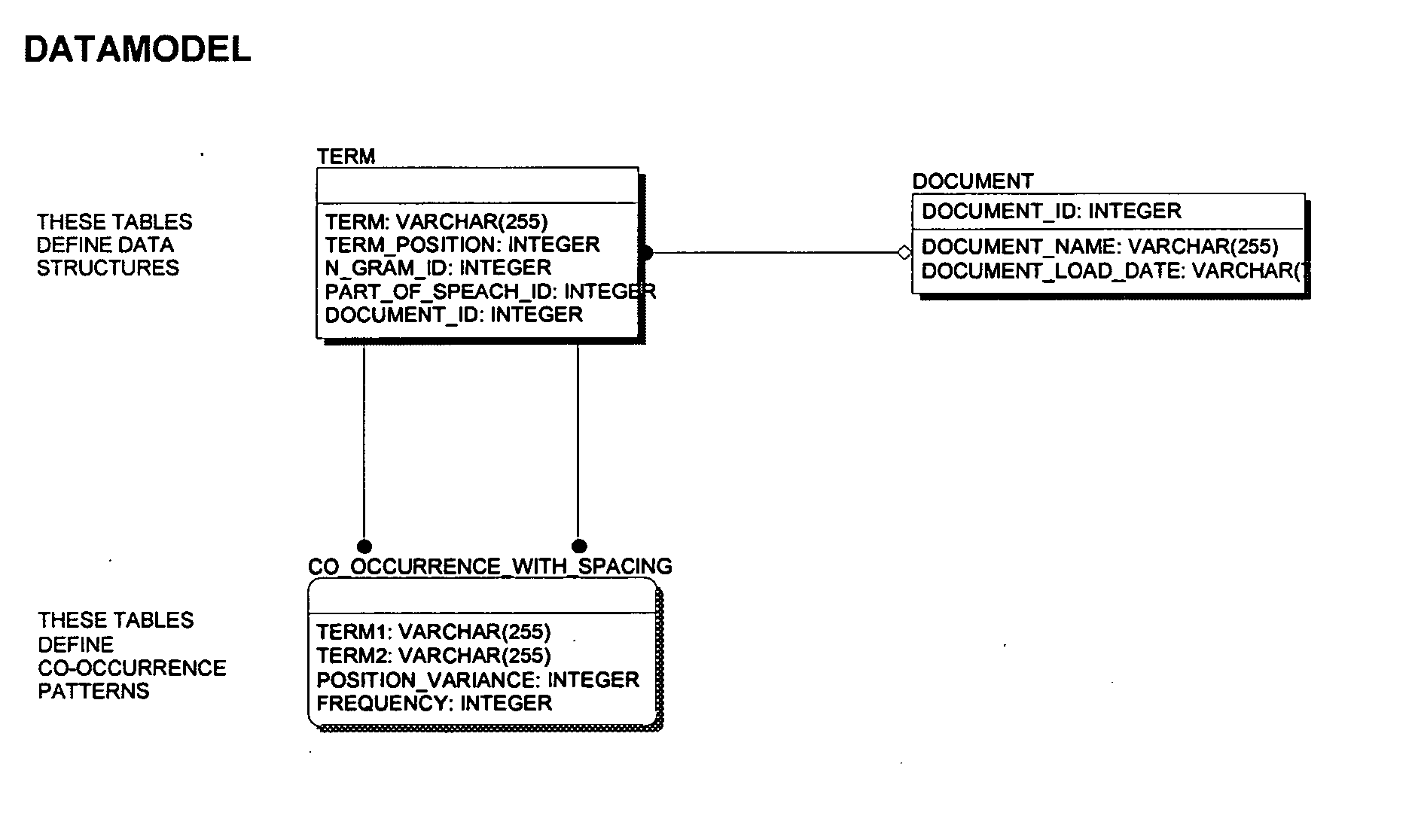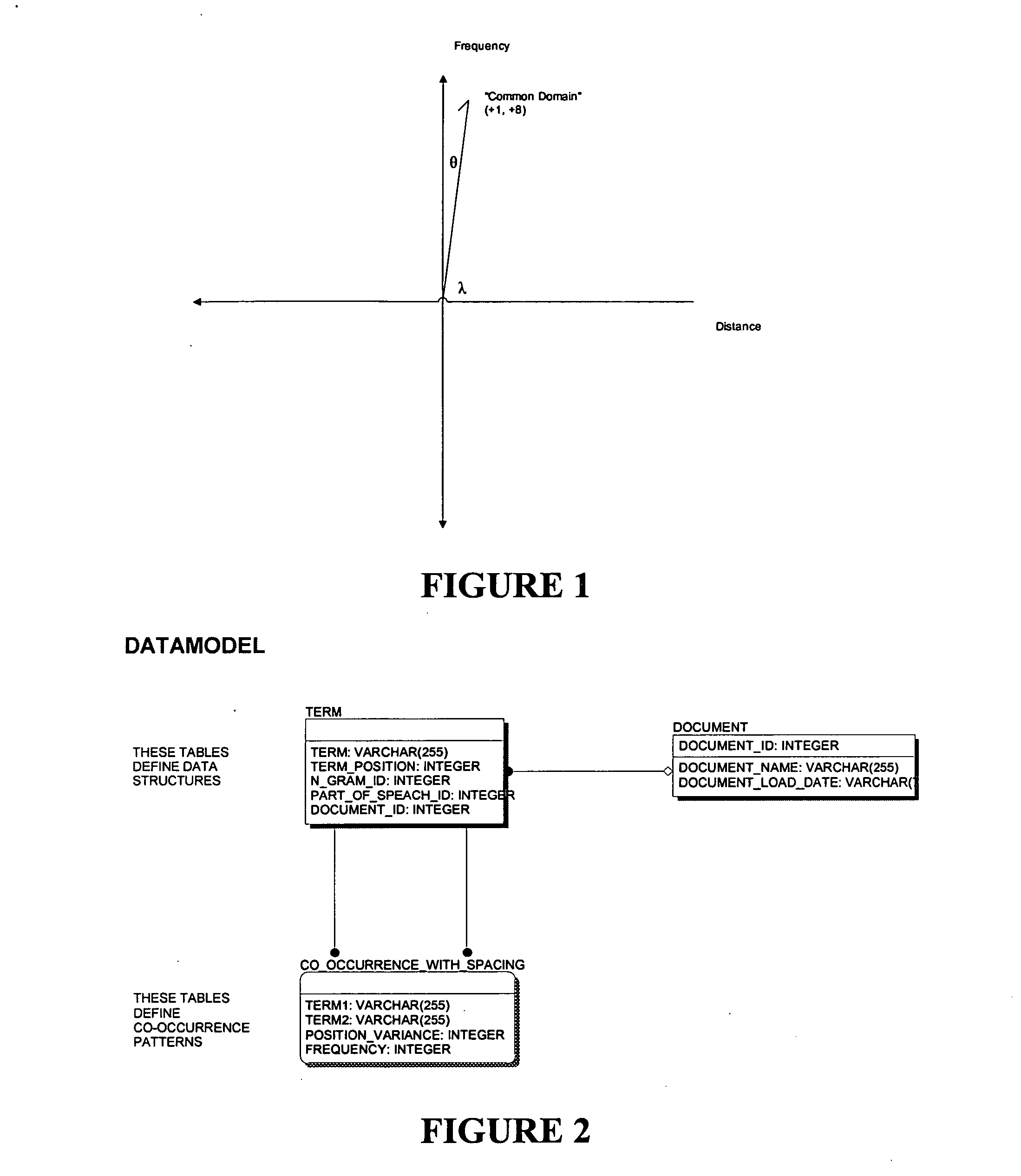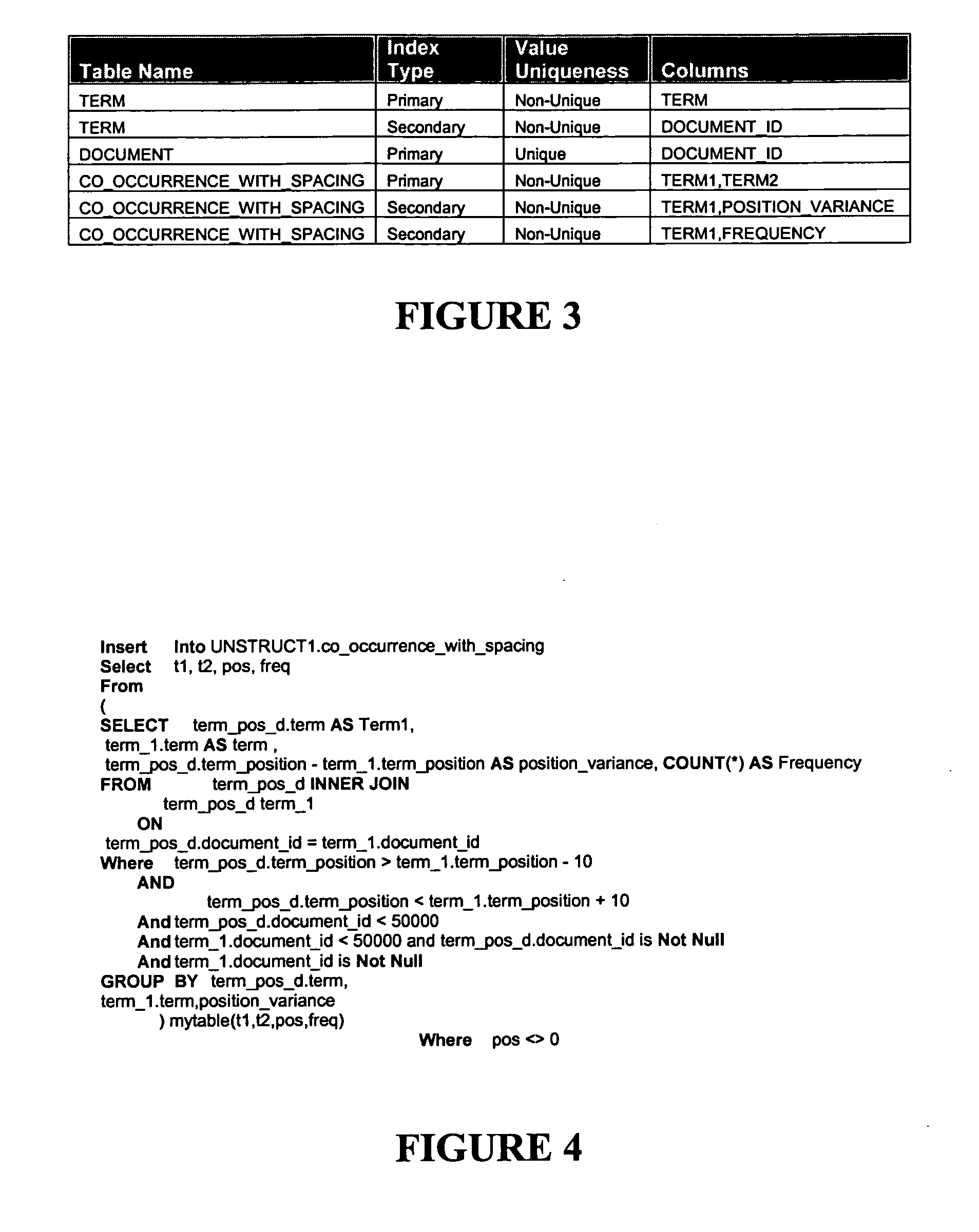Statistical natural language processing algorithm for use with massively parallel relational database management system
a database management system and statistical natural language processing technology, applied in the field of computer software, can solve the problems of large computing resources required to manage such a database and extract desired data from the database, and the inability of data mining applications to use the built-in storage, join processing, indexing, and join processing capabilities of an rdbms to do the search and pattern matching directly in the rdbms, etc., to achieve the effect of being suitable for us
- Summary
- Abstract
- Description
- Claims
- Application Information
AI Technical Summary
Benefits of technology
Problems solved by technology
Method used
Image
Examples
Embodiment Construction
[0035] Embodiments consistent with the invention utilize a statistical natural language processing methodology referred to herein as “positional co-occurrence” to provide a scalable and flexible manner of generating queries for a database, e.g., using a massively parallel RDBMS. A discussion of the methodology will precede a discussion of exemplary implementations for accessing a collection of data utilizing the methodology.
Positional Co-Occurrence Methodology
[0036] As noted above, embodiments consistent with the invention utilize a SNLP methodology to facilitate the access to a text collection in a database. The methodology is premised on the fact that, over a large collection of text, and at an ever increasing degree of precision, the common distance between words and the frequency at which those distances occur tend to indicate a strong or weak relationship between words and word structures. Thus, unlike SVD techniques that merely look at the number of times terms may appear t...
PUM
 Login to View More
Login to View More Abstract
Description
Claims
Application Information
 Login to View More
Login to View More - R&D
- Intellectual Property
- Life Sciences
- Materials
- Tech Scout
- Unparalleled Data Quality
- Higher Quality Content
- 60% Fewer Hallucinations
Browse by: Latest US Patents, China's latest patents, Technical Efficacy Thesaurus, Application Domain, Technology Topic, Popular Technical Reports.
© 2025 PatSnap. All rights reserved.Legal|Privacy policy|Modern Slavery Act Transparency Statement|Sitemap|About US| Contact US: help@patsnap.com



